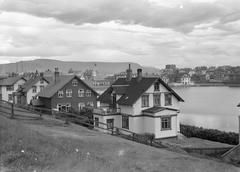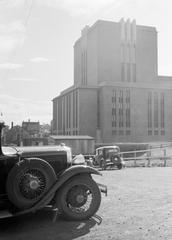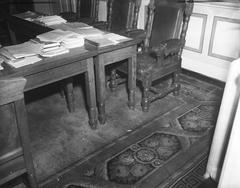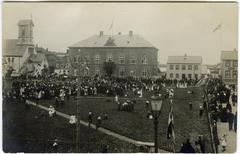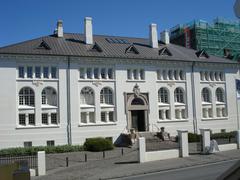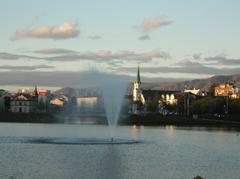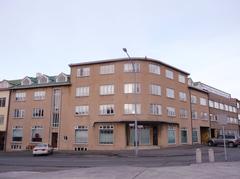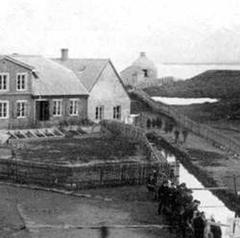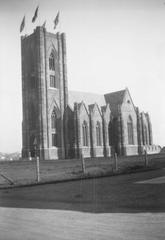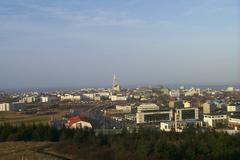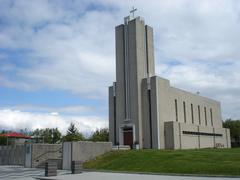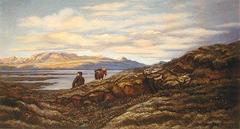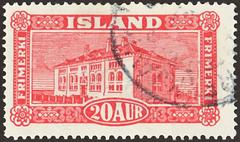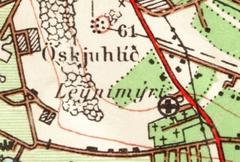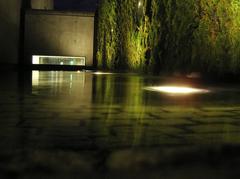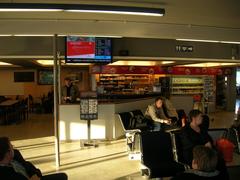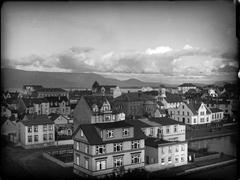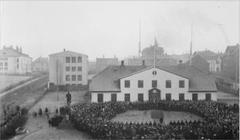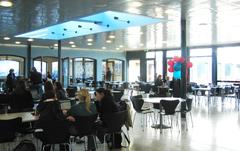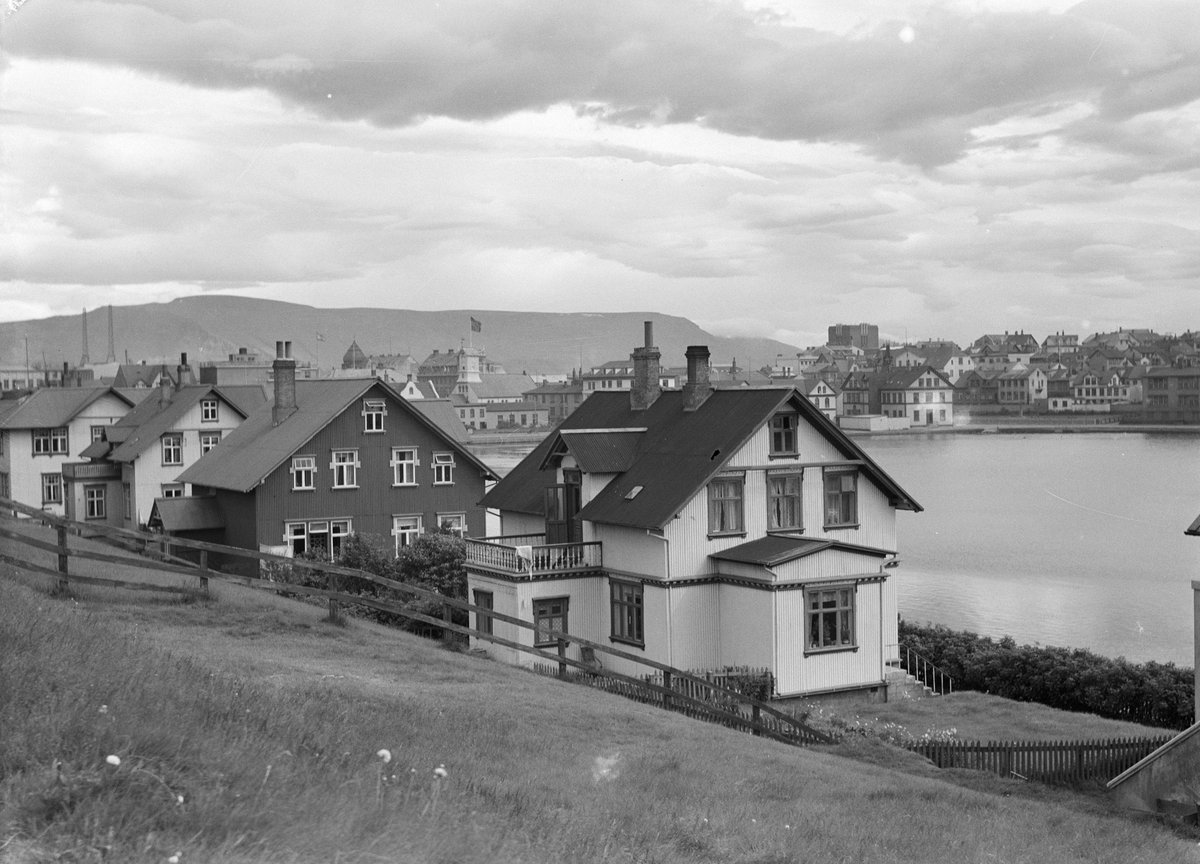
National Theatre of Iceland Reykjavík: Visiting Hours, Tickets, and Visitor Guide
Date: 14/06/2025
Introduction: The Heart of Icelandic Culture
Located in central Reykjavík, the National Theatre of Iceland (Þjóðleikhúsið) is a cornerstone of the nation’s cultural landscape and a must-see for anyone interested in Icelandic arts, history, or architecture. Since its opening in 1950, the theatre has not only showcased the best of Icelandic and international performing arts but also stands as a powerful symbol of national identity and creative ambition (arc-magazine.com; MexicoHistorico.com). This detailed guide explores the theatre’s history, architectural highlights, cultural significance, and offers practical information for planning your visit.
Table of Contents
- Introduction
- Historical Background
- Architectural Significance
- Visiting Information
- Notable Productions and Cultural Impact
- Frequently Asked Questions (FAQ)
- Visual and Media Suggestions
- Conclusion and Recommendations
- References
Historical Background
Origins and Vision
The roots of Icelandic theatre stretch back to the late 18th and 19th centuries, when Reykjavík was still a small settlement and dramatic arts were primarily amateur endeavors (Leikminjasafn). The idea for a national theatre was first articulated by playwright Indriði Einarsson in 1873, and the vision gained momentum in the early 20th century, paralleling Iceland’s drive for cultural and political independence (arc-magazine.com).
Building the National Theatre
After years of lobbying and legislative effort, the Icelandic parliament allocated funding for the theatre in 1928, supported by a dedicated entertainment tax (arc-magazine.com). Guðjón Samúelsson, Iceland’s most celebrated architect, created a design that fused Art Deco with motifs inspired by Icelandic folklore and natural landscapes (leikhusid.is; adventures.is). Construction began in 1929 but was interrupted by the Great Depression and World War II. The theatre finally opened its doors in April 1950 (leikhusid.is; grapevine.is).
Architectural Significance
The National Theatre is an outstanding example of Icelandic Art Deco, set apart by its dark grey façade, geometric forms, and decorative panels that reference Iceland’s volcanic geology and folklore (adventures.is). Inside, the main auditorium features a ceiling inspired by basalt columns, elegant red carpeting, and gilded accents. Key performance spaces include:
- Main Stage (445–500 seats)
- Black Box (130–140 seats)
- Theatre Cellar Cabaret Club (100–120 seats)
- Children’s Stage, Kúlan (80 seats)
- Experimental Loftið (70 seats)
(wikipedia)
Recent technological upgrades, such as energy-efficient LED lighting, have preserved the venue’s historical ambiance while enhancing the visitor experience.
Visiting Information
Visiting Hours
- Performance Days: Tuesday to Saturday, with shows typically starting at 19:30 or 20:00.
- Matinees: Weekends and holidays at 14:00 or 15:00.
- Box Office: Opens one hour before performances and remains open until the show begins.
- General Opening: Monday–Friday, 11:00 AM–6:00 PM; Saturday, 12:00 PM–4:00 PM; closed Sunday.
Always verify hours and showtimes on the official website before your visit.
Tickets and Booking
- Online: Purchase securely through the official National Theatre website.
- In Person: Buy at the box office during opening hours.
- Local Vendors: Select agencies and travel partners may also offer tickets.
- Prices: Typically range from ISK 2,000 to 8,000 depending on the production and seating. Discounts are available for students, seniors, and children.
Guided Tours
Theatre tours, focused on architecture, history, and backstage areas, are available by appointment. These should be booked in advance via the official website. Virtual tours and behind-the-scenes videos are also accessible online.
Accessibility
The National Theatre is committed to inclusivity, offering wheelchair-accessible entrances, seating, and restrooms. Hearing loops and assistive listening devices are available in the main auditorium. Visitors needing additional assistance should contact the theatre in advance to arrange support.
Nearby Attractions and Travel Tips
Centrally located on Hverfisgata, the theatre is easily reached on foot or by public transport. Combine your visit with nearby Reykjavík cultural sites:
- Harpa Concert Hall
- Reykjavík City Hall
- The Old Harbour
- Laugavegur shopping street
- Reykjavík Art Museum
Travel Tip: Arrive 20–30 minutes early to enjoy the lobby’s Art Deco details and explore the theatre’s exhibitions.
Notable Productions and Cultural Impact
Since its inauguration, the National Theatre has presented a diverse repertoire, from Icelandic classics and medieval sagas to international plays by Shakespeare and Ibsen (grapevine.is). The theatre is also a platform for new Icelandic writing, contemporary dance, and experimental works, nurturing talents like Baltasar Kormákur and Benedikt Erlingsson. Regular collaborations with festivals, such as the Reykjavík Arts Festival, position the theatre at the center of Iceland’s creative life (visitreykjavik.is).
Frequently Asked Questions (FAQ)
Q: What are the National Theatre of Iceland’s visiting hours?
A: Typically Tuesday to Saturday for performances, with box office hours from 12:00 PM to 6:00 PM. Check the official website for up-to-date information.
Q: How can I buy tickets?
A: Tickets are available online, at the box office, and via select local partners. Advance booking is recommended.
Q: Are there English-language performances?
A: Most shows are in Icelandic; select performances during festivals may include English surtitles or summaries.
Q: Is the theatre accessible for visitors with disabilities?
A: Yes, it offers wheelchair access, assistive listening, and support upon request.
Q: Are guided tours available?
A: Tours are offered by appointment; consult the official website for details.
Q: Can I take photos inside?
A: Photography is allowed in public spaces like the lobby, but not during performances.
Visual and Media Suggestions
To enrich your visit or travel planning, browse the official website for photo galleries and virtual tours. Recommended image alt tags for SEO include “National Theatre of Iceland façade at night” and “Basalt-inspired ceiling in National Theatre auditorium.” Location maps and virtual walkthroughs are also available online.
Conclusion and Recommendations
The National Theatre of Iceland encapsulates the nation’s artistic heritage, architectural innovation, and dynamic contemporary culture. Whether you’re exploring Reykjavík’s historical sites, attending a world-class performance, or delving into Icelandic folklore, the theatre promises an enriching and memorable experience. Plan your visit by consulting the official National Theatre website for performance schedules, ticket booking, and special events. Enhance your stay by exploring other nearby landmarks and using the Audiala app for cultural updates.
